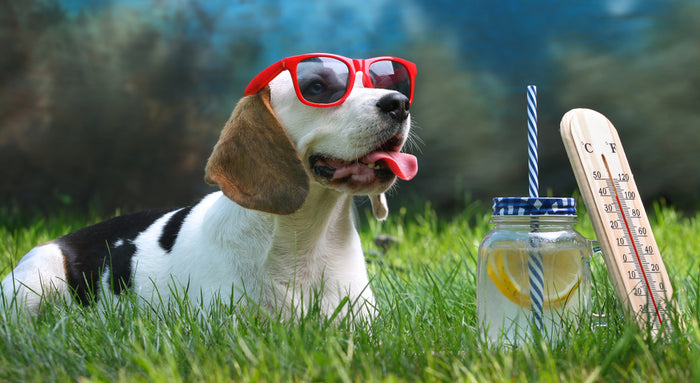Dog Allergies: Everything You Need To Know About Them

Allergies in dogs might seem like a ridiculous thought, but just like humans, our furry friends suffer from environmental factors messing with their immune systems. Untreated allergies in dogs can lead to annoying habits like constant scratching and licking and, worse, discomfort for them. If you suspect that your fur-child may have allergies, it might be time to consult with your vet. If you need more convincing, we have some information to lead you in the right direction with everything you need to know about dog allergies.
Types of dog allergies
Just like humans, allergies in dogs can come from various environmental sources. Think of that one person you know who seems to be allergic to the most random thing. This can be the case for your furry friend. Allergies in dogs are broken up into three main categories.
Food Allergies
Food allergies in dogs are different than food allergies in humans. When a dog has a food allergy, they do not typically experience the hives or swellings that humans experience. Instead, dogs experience more gastrointestinal issues like vomiting or diarrhea. There are some skin issues that can come from dogs having allergies, so if you see your pup scratching themselves frequently or having a poor coat appearance, then your dog may have a food allergy.
If your dog has a food allergy, then it is likely due to an intolerance for what they’re eating. The best way to help a food allergy in your dog is to switch their dog food to a high-quality brand that helps with food insensitivities.
Skin Allergies
Skin allergies are the most common type of allergies seen in dogs. The type of food that you’re feeding your dog (which we’ve already covered) can lead to skin allergies, but the most common form of skin allergies in dogs comes from fleas. If you are not giving your dog flea medicine every few months, then that means they are more susceptible to the saliva from fleas which affects your pup. When your pup is exposed to fleas, this is when you see the constant itching, redness, and possibly even fleas themselves. Flea allergies are easy to prevent by picking up flea and tick medicine from your vet and making sure you bathe your canine regularly to wash them off.
Speaking of keeping your dog clean, environmental factors are another reason how your dog may develop skin allergies. Dust, pollen, and mold are notorious factors for giving your dog skin allergies and causing them to itch. With environmental factors affecting your dog’s allergies, some of this may be seasonal, depending on the weather and air quality. If that’s the case, then your vet may be able to provide some medicine for those time of years.
One important thing to remember with skin allergies is that if your dog is left untreated, then they could run the risk of contracting yeast infections. Yeast infections occur typically in a dog’s paws or ears since these places are never able to dry out and are dark and wetter. If your dog has a skin allergy, make sure they do not keep biting or licking at the infected area so they can keep the risk of having a yeast infection down.
Acute allergic reactions
If a dog experiences an acute allergic reaction, like a bee sting, and the reaction is severe enough, then they can go into anaphylactic shock if the allergy is left untreated. These types of reactions are rare in dogs, but you should still keep a watch on them when they are given new food or if they experience a bee sting.
Symptoms of dog allergies
Itchiness, vomiting, diarrhea, ear infections, and licking are common reactions to allergies. While these are “typical” symptoms of other issues that may be happening with these symptoms, you can tell if a dog has allergies based on how long these symptoms are occurring. Your dog may experience other symptoms of allergies such as sneezing, face or body swelling, and itchy, runny eyes.
What to do if your dog has allergies
If you think your dog may have allergies, then it is best to consult with your vet. Your vet will ask you questions and test your dog to make sure they can rule out any other situations. If your dog is experiencing a certain type of allergy, then your vet will give your medicine or instruct you on what to do, like switch your dog’s food or give them a pill to take at dinner.
Allergies are simple to treat with dogs; the key is catching them quickly and taking them to see the vet so your beloved furbaby can assess the problem and get the allergy under control as soon as possible.




